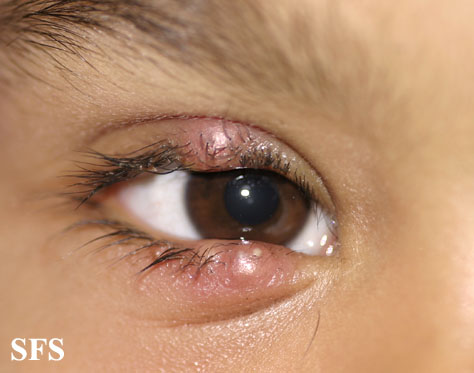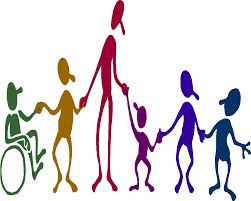By Dr Anmol Arora MD( Hom)
Sr Homoeopathic Consultant and Specialist
Ulcerative colitis is a form of inflammatory bowel disease (IBD). It is a chronic inflammation with ulcers (open sores) in the innermost layer of the large intestine. There is no known cause for ulcerative colitis but there are many possible factors such as genetics, infections and stress.
Symptoms of ulcerative colitis?
During a flare-up, symptoms can vary depending on the location of ulcerative colitis and the severity of inflammation:
• Diarrhea mixed with blood and mucus
• Abdominal pain – from mild discomfort to painful cramping.
Patients may also have anemia, fatigue and weight loss. Ulcerative colitis often has extra-intestinal manifestations such as joint pain, mouth ulcers, skin, eye and liver symptoms.
Diagnosis
The diagnostic work-up for ulcerative colitis includes:
• stool specimens
• blood tests
• an endoscopy with biopsies of the mucosa
• a barium enema X-ray
• video capsule endoscopy
• CT or MRI enterography
Treatment
Although the symptoms of ulcerative colitis can sometimes diminish on their own, the disease usually requires treatment to go into remission. Conventional treatment for ulcerative colitis includes corticosteroids and amino salicylates to reduce inflammation. In severe cases immunosuppressive drugs are also prescribed.
Homeopathic Remedies for ulcerative colitis
Homeopathic treatment can relieve the bleeding and diarrhea and can shorten flare-up`s duration. It can also bring about a long-term remission and prevent new attacks.
Research suggests that ulcerative colitis may be an autoimmune disease and a virus or bacterium may trigger the disease. Homeopathic treatment reinforces the immune system and helps the body`s defense against infection. Homeopathy is compatible with conventional treatment and you can take homeopathic medicines when you are on other medications too. Homeopathic therapy is natural and has no side effects.
Stress is one of the triggers that can set off a flare-up. Homeopathic medicines are very effective in ulcerative colitis because they balance the immune system, treat the intestinal symptoms and also relieve stress.
Some common homeopathic medicines for ulcerative colitis include:
• Argentum nitricum – diarrhea with mucus and blood; excessive gas; craves sweets but doesn`t tolerate sugar well. Anxious, always in a rush, irrational fears. Diarrhea from being anxious.
• Arsenicum album – foul-smelling diarrhea, more frequent stools at night, burning pain in the abdomen relieved by heat or warm drinks. Fear of disease and death. Chilly, weak but restless.
• Mercurius corrosivus – a medicine for ulcerative and hemorrhagic lesions, severe burning and frequent painful urge to defecate, bloody foul-smelling diarrhea, pain lingers after defecation.
• Nitricum acidum – diarrhea with mucus and blood with stinging pains and painful urges. Chilly, weak, irritable, with health anxiety.
• Phosphorus – bloody painless and profuse diarrhea. Emotional oversensitivity to the feelings of others. Overexcited mind with fits of anxiety mainly when alone or in the evening; gets tired easily.
Homeopathy can be safely used with herbs and supplements that also reduce the symptoms of ulcerative colitis, such as vitamins, fish oil and aloe vera juice
Ulcerative Colitis Dietary Advice
When the patient is relatively symptom-free:
The basic dietary principles for UC are no different to those for the general population. Carbohydrates (rice, bread, pasta, potatoes, breakfast cereals, etc), proteins (pulses, meat, fish, eggs, nuts, etc.), vegetables and fruits form the main part of the diet. Protein foods are essential for growth and repair and also provide iron – these should be taken in adequate quantities. Fat intake must be moderate because excess of fat intake may cause wind and diarrhoea.
Dairy foods, which provide calcium and protein, should be taken in adequate amounts provided they don’t cause any problems (such as diarrhoea and wind) to the patient.
Usually small amounts of milk, for example in tea or coffee, do not cause any problems. Dairy products such as butter, cheese and yoghurt are also well tolerated. If milk is excluded, it should be replaced with low lactose milk or with Soya milk. This should be discussed with a dietician to ensure that the nutritional balance is maintained.
Beer or other alcoholic drinks, excess of fruit or fruit juice, onions and spicy foods aggravate the symptoms in some patients and hence these are better avoided by them.
Constipation is often associated with distal colitis and may aggravate the condition; therefore, it is important to eat sufficient fibre in the diet in order to prevent this. However, if dietary fibre cannot be tolerated without unpleasant symptoms, a bulking agent is advised instead (e.g. Methylcellulose, Fybogel or Normacol), with an increased fluid intake to soften and regulate the motions.
Certain things to avoid in UC:
• Processed foods (i.e. foods containing preservatives)
• High intake of sugar and artificial sweeteners
• Excess of spicy foods
• High fat and deep fried foods
• Alcohol, beer and aerated water
Diet during the acute phase of UC:
An inflamed large intestine may not be able to reabsorb sufficient water or salt from the bowel and this can result in the passing a large volume of diarrhoea or semi-solid stool. Fluids need to be replaced during bouts of diarrhoea and vomiting to prevent dehydration. Usually this can be achieved by drinking more liquid but in severe cases, a solution of salt and glucose in water may be prescribed to improve absorption.
During a relapse, high fibre foods such as wholemeal bread, high fibre breakfast cereals, dried fruit and pulses, beans, lentils, peas and sprouts, may make diarrhoea worse. Reducing fibre may help reduce bowel movements. When symptoms improve, fibre can be gradually reintroduced back into the diet to the level that is tolerated. Those who suffer from constipation or who are troubled by passing hard stools need to maintain an adequate level of fibre in the diet. Bulking agents, stool softeners or osmotic laxatives may be helpful.
When the intestine is inflamed its capacity to absorb fat is impaired and even a moderate amount of fat in the diet may cause wind and diarrhoea. Restricting high fat foods may help. However, it is important to replace these foods with carbohydrate- and protein-rich foods to prevent weight loss.
Protein loss can occur from leakage of the damaged intestinal lining. If this lining bleeds there is a risk of becoming deficient in iron which can lead to anaemia. A nutritious diet, high in calories and protein, is then needed to replace lost energy and nutrients.
In active inflammation certain vitamins and minerals may be lost from the body. Supplements of multivitamins and iron tablets may help. High intake of fluids and foods rich in magnesium and vitamin C may lower the risk of relapse. For consultation kindly contact at +91-9810097591.
“Homoeopathy for safe and natural way of cure without side effects”

 January 25th, 2016
January 25th, 2016  Dr Anmol Arora
Dr Anmol Arora 
 Posted in
Posted in 








